Hi there!
If you stumbled upon this post, that probably means that you’re interested in brewing some espresso yourself. And I’m guessing that you are already brewing with pour overs and are looking for something new to try. If you are that person you own a grinder to grind your coffee beans four each brew, right?
In this situation, you are most likely looking for an espresso machine to buy. Espresso requires high pressures for brewing and you need a machine to do this. (I’ve written a few posts on how to select an espresso machine, please give them a read if you are interested)
The thing that is easy to forget is that you would need to get a grinder that works for espressos. You probably do have a grinder that you used for your filter coffees, but that may not work for espresso. It is often said that the quality of the espresso your can pull depends more on your grinder than your espresso machine.
In this post, I will try to explain why grinders play such a big role in espresso brewing. I will also cover what features people look for in espresso focused grinders and why they are necessary.
By reading this post, I hope you can avoid a situation where you bought your espresso machine but can’t seem to get good espresso out, because you don’t have a good enough grinder. Worst case being, you used all your budget on the espresso machine, and don’t have any left for a new grinder.
Why grinders are important for espresso
The basic principle is the simple. A good grinder will give you more uniformly sized grinds which usually means you get better tasting coffee. This is the same in filter coffee and espresso.
With filter coffee the reason is that with more uniform grind sizes, you can more evenly extract the coffee from all your grinds. This will avoid over extracting harsh tastes from some grinds, at the same time also avoiding leaving good stuff in the grinds by under extracting from other grinds. You can maximize the extraction of good qualities from your coffee beans, while avoiding the bad.
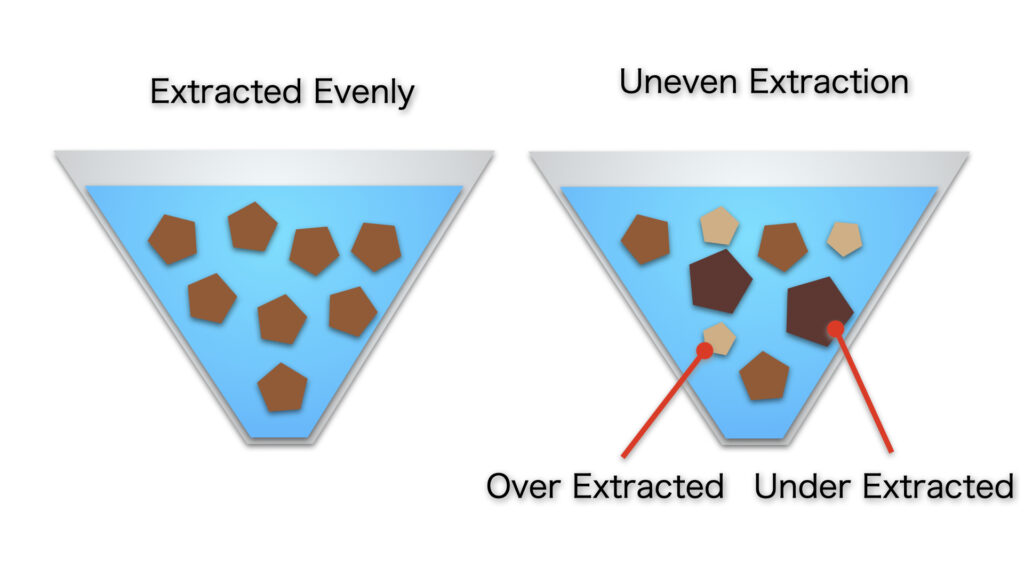
This uniformity in extraction also is a key factor in espresso extraction. But espresso brewing introduces another difficulty. The grinds have to function as a part of the machine to create the high pressures necessary for pulling espresso.
If you want to build pressure, you need a mostly sealed container. If you imagine pumping air in to a ball with a large hole in it, it’s never going to inflate or bounce. So you need a pump to push air in AND the walls of the ball to keep the air contained to build pressure.
It’s the same thing with espresso brewing. The espresso machine provides the pump to push the water in. It needs something to resist the water flow to build the pressure. This is where the coffee grounds come in. The tightly packed finely ground coffee needs to act as the resistance.
This is the key difference between grinds for filter coffee and espresso. In espresso, the grinds have one more key role to play in the extraction process, which inevitably means more is required from them.
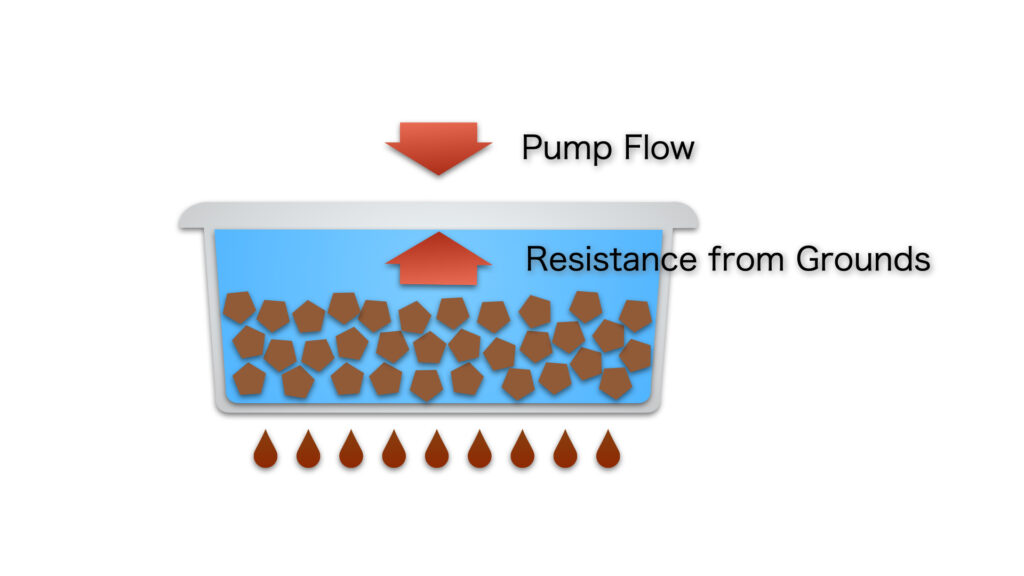
So what is necessary to provide the resistance? Well you need to tightly pack the coffee grinds together so you don’t have gaps between the grinds, right. For this, you need fine grinds.
This is why you generally use much finer grind settings for espresso than filter coffee. If you have bigger grinds, they form bigger gaps between them, resulting in insufficient resistance, and an under extracted espresso. One thing to note is, you don’t want to have too much resistance either. There is a fine line which provides a good amount of resistance. So accurate control of grind size is necessary.
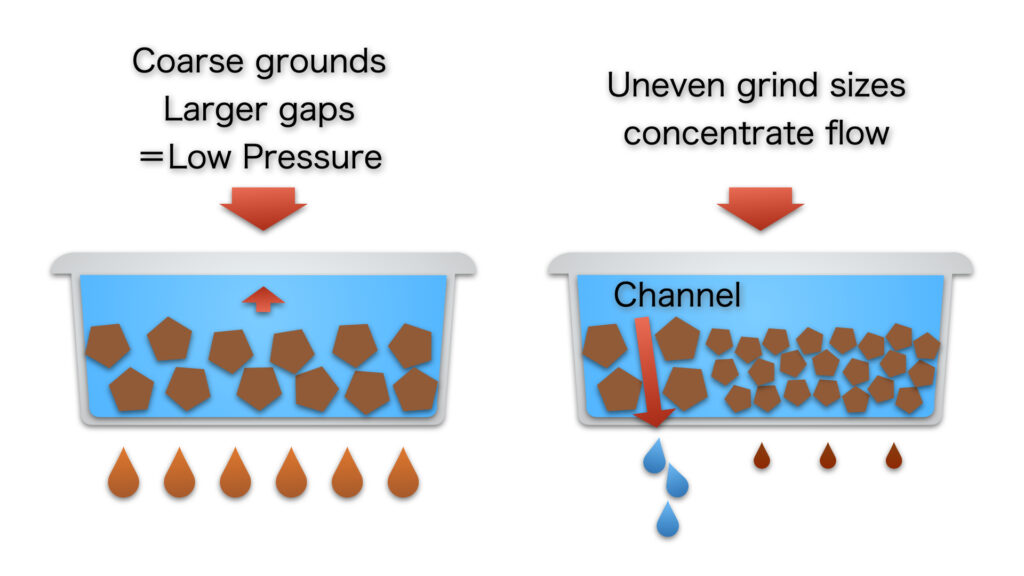
The uniformity of grind sizes is crucial to achieve an even extraction from the grinds. If some grinds are coarser than others, the gaps around the coarse grinds will provide less resistance. The pressurized water will always try to find the path of least resistance. This leads to the flow focusing on the low resistance areas.
This will over extract the grinds in this region. Also the faster flow will dig a hole in the coffee puck creating what is called a channel. Once formed, water will just be able to flow right through the channel without extracting any coffee.
These are the reasons fine and accurate control of the grind size, and a uniform grind size distribution becomes even more important for espresso brewing, compared to filter coffee.
Features of espresso capable grinders
Now we will look at some of the features found in espresso capable grinders.
Stable and high precision construction
Burr grinders control the grind size by adjusting the gap between the 2 burr blades.
How finely and uniformly you can grind is essentially determined by how stably you can rotate the blades.
You obviously need to rotate the blades to grind any beans. If the axis of rotation is misaligned or slanted, the gap between the 2 burr blades will be different for different parts of the rotation, leading to un-uniform grinds. If your blade wobbles, you have to keep some distance between the blades to avoid them touching each other, which could potentially lead to damaging the blades. The more stable the rotation, the closer you can keep the burrs, and the finer grinds you can get.
The stability and precision of the build is a major factor in getting good grinds. Things like metal construction of the body, bearings in the rotation shaft, all contribute to a more stable build.
Another point to keep in mind are the burrs themselves. High quality grinders now-a-days almost all use metal burrs, instead of ceramic ones. Metal burrs are far more accurate in their shape and are more durable and sharper.
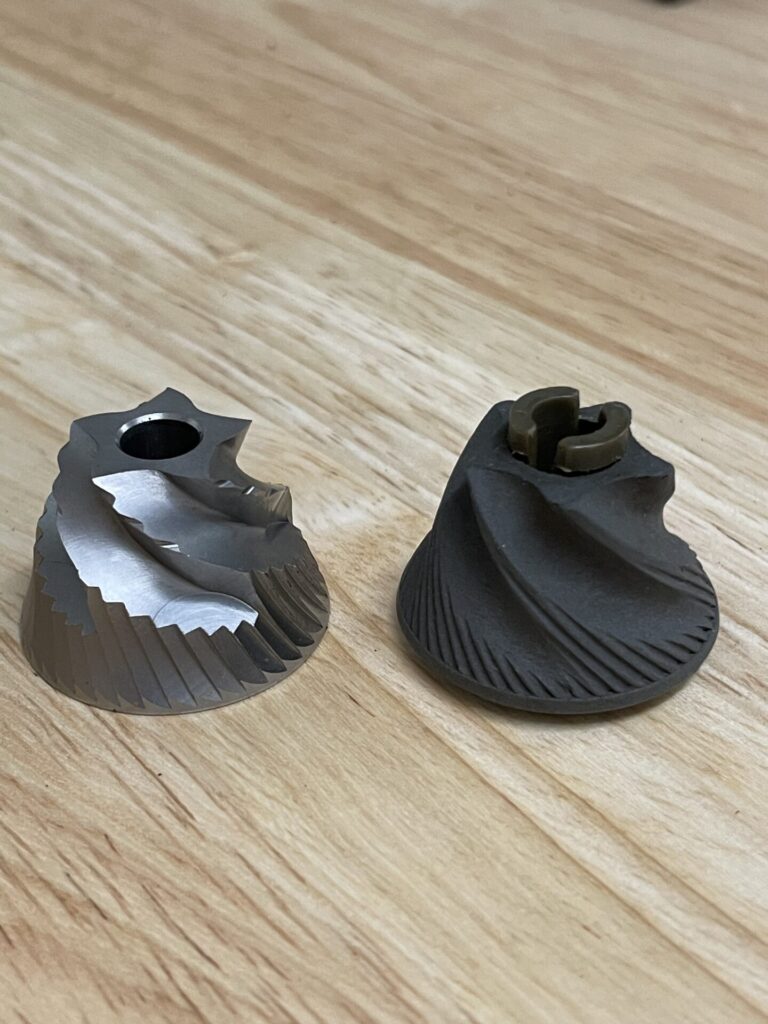
Step-less grind size adjustments
As I mentioned, the grind size is determined by the gap between the burrs. The adjustment mechanism can be categorized between, stepped and step-less adjustments.
Stepped adjustments basically have groves where the adjustment dial can be. The benefit of this is that since you have countable steps, you can restore a previous setting easily after taking off the burrs for maintenance. It’s also nice that stepped adjustments are less likely to drift, since it takes significant force to jump to a different step. The drawback is that you have a limited granularity in your settings. So for example, you can not set the setting to a 5.5 step (in between the 5th and 6th step).
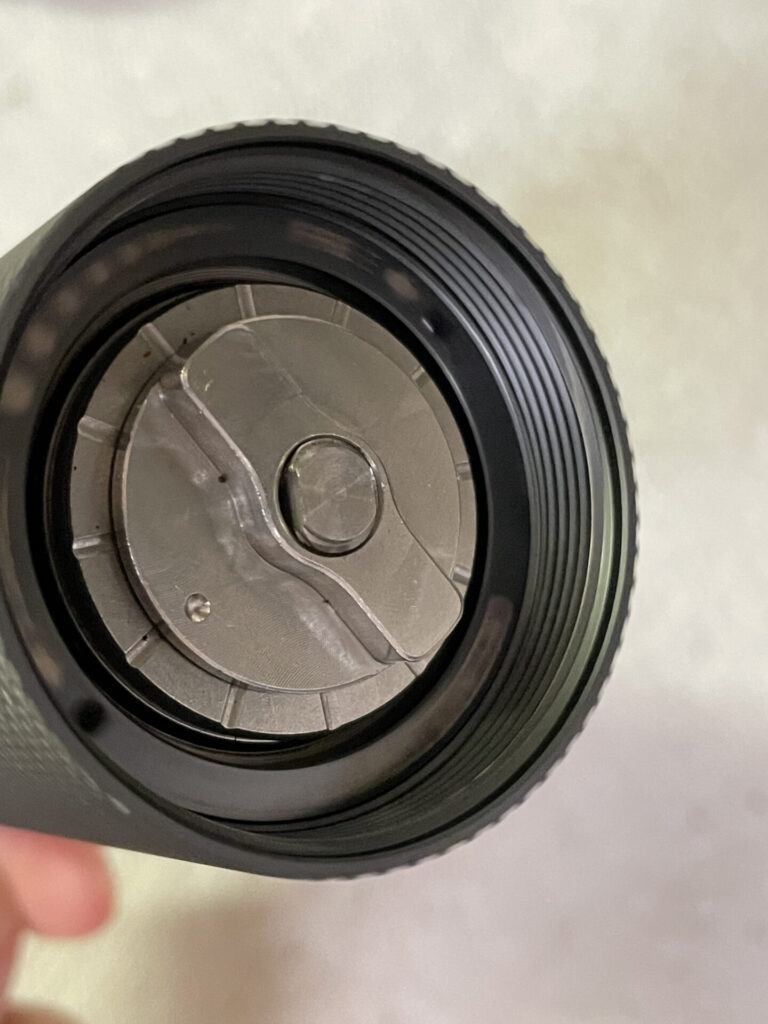
Step-less adjustments offer you finer control of your settings. They usually come with some markings, but you can set it to anywhere between the markings. It is difficult to get back to an exact setting, but the markings will usually get you close.
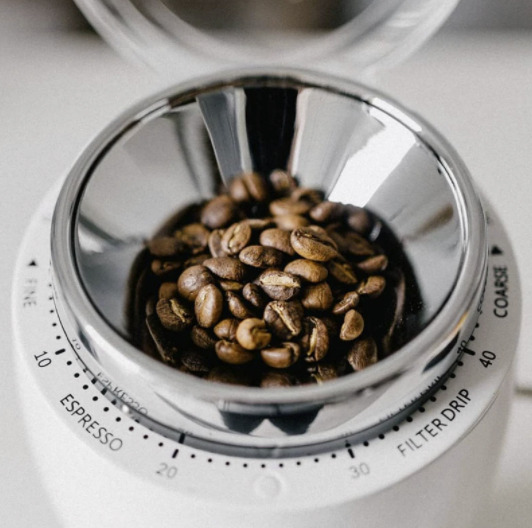
For espresso use, step-less grinders are generally preferred. The reason being that you need very fine control of the grind size to get the optimal flow rate. People often measure how many seconds it takes to extract how many grams of espresso from a certain input dose of coffee grounds. They use this as a guideline to dial-in the extraction.
If you have a stepped grinder, it could be that 1 step will overshoot your target time. You could get lucky where the step exactly aligns with your target but that is rare.
On the other hand with a step-less grinder you can fine tune as much as you like to get the exact grind size you are looking for.
There are things called micro-stepped adjustments, where the steps are made very fine. This will increase the chances of you having the exact setting you have, while keeping the merits of stepped grinders. The downside to these will be that you would have to count enormous steps to get to coarser grind settings for things like filter coffee.
Zero Retention
Retention refers to the amount of coffee left in the grinder after grinding.
Even if you put in 10g of beans and get 10g of grounds out, that does not necessarily mean you have zero retention. You could have some old grounds stuck in the machine which got pushed out with the new grounds.
To measure true retention, you need to clean out your grinder, then put 10g of beans in, and measure the amount that comes out. If 9g comes out you have 1g of retention, if you get 10g out you have zero retention. But realistically, you will never get everything out. So a retention of under something like 0.5g is typically considered zero retention.
This is a recent trend but low retention grinders are preferred for espresso grinders. This is especially true for home use.
What is bad about high retentions?
The obvious one is that you have some grinds stuck in the grinder. Ground coffee degrades much faster than beans. The more retention you have, the more stale coffee you will have in your next cup. This is an issue which affects both filter and espresso.
An issue that is specific to espresso is the fact that retained grounds are ground at the old grind setting. In espresso brewing you will be adjusting the grind setting very often while dialing in your shot. Having grounds from the old setting come out means that the grounds coming out just after an adjustment is actually not the adjusted size.
To solve this, you would need to grind through and throw away a few grams of beans to purge out the old grounds. Its annoying to do this every time you adjust, and is too wasteful.
If you are in a high volume cafe using a lot of the same beans, you may be ok with wasting a little to dial-in a large batch of beans. And since you are going through a lot of beans quickly, the retained grounds wont have too much time to go stale.
But in a home setting, where you may only have like 200g of a bag of coffee beans, you want to waste as little as possible. And you may also be switching between different beans often. It is very beneficial if you can avoid the waste and extra work of purging.
Hand grinders typically are very low retention because of their simple structure and small size. Electric grinders tend to be more complex and larger which naturally leads to more retained grounds.
Single Dose Grinders
Single dose grinders are grinders which are designed to grind through all the beans that are put in to the machine. So you would weight the amount of coffee beans you want, then load that amount in to the grinder every time. This means that the hopper, which is the container to hold the beans, can be made small. All hand grinders could be considered single dose grinders (but no one calls them that because they all are). Single dose grinders have become very popular in recent years.
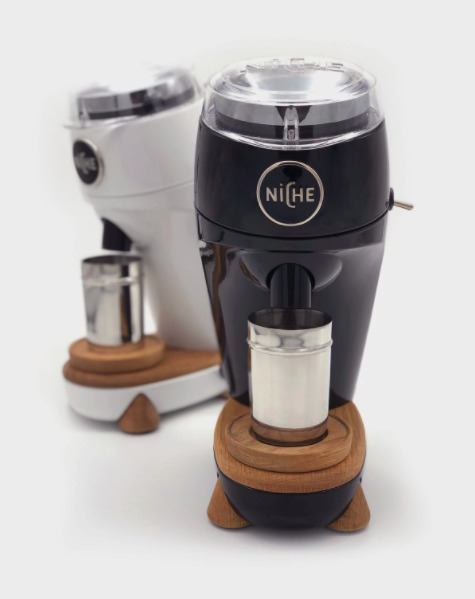
What was common were grinders with large hoppers which can stock entire bags of coffee beans. You keep the beans in this, and grind the amount you need every time by controlling the time you keep the grinder running. Depending on the type of bean you have in the hopper, the time and the actual grams of coffee you get out will vary. The amount may also vary every time, so you may need to weight the grounds you got out and adjust.
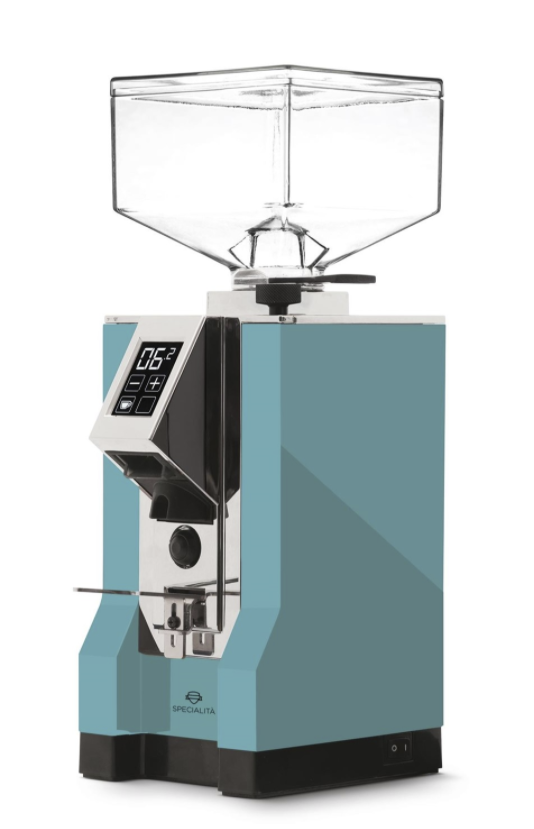
Single dose grinders have a few benefits for home use. You don’t keep your beans in the hopper, so you could keep your beans is a cooler darker place to slow degradation. They tend to be smaller, since they don’t have a large hopper.
With non-single dose grinders, you usually end up with partially ground beans between the burrs when the motor stops running. Trying to adjust the grind setting finer in this state will force the burrs in to the beans. This will put undesirable force on the burrs and motors and could end up jamming the motor. This is why it is recommended to keep the motor running while adjusting finer. If you have a non-single dose machine, you will be wasting the coffee you grind while doing this. With a single dose machine, you could do this while the grinder is empty avoiding waste. (You may even be able to get away with adjusting while the motor is stopped, since there is close to no beans between the burrs)
Electric
You can get hand grinders and electric grinders for espresso, but electric grinders will help you a lot. You may be fine with hand grinding for filter, but for the fine grinds required by espresso, you may need to put in double or triple the amount of work.
Though if you don’t mind putting in the work, there are hand grinders which are very capable of producing espresso grade grinds. On the plus side, you will get better grinds from a hand grinder compared to an equally priced electric one. Simply because the manufacturer can use the cost for motors and electronics into the burr quality and the build.
OK… that was a lot to cover. Thank you for reading until the end!
To sum up, espresso require finer and more even grind sizes than filter coffee. For this you need good build quality and stability in your grinder. Also fine adjustments are key in espresso, for which you want step-less adjustments. Zero retention and single dose grinders will help you reduce work and waste when dialing in your shot. And electric grinders will make the work easier.
I will be sharing my impressions on popular grinders. Probably the most hyped grinder on the market now is the Niche Zero which we saw in a couple of images. It’s so popular that it’s still really difficult to buy one, even after a few years from its initial release.
Hope this helps you find the grinder best for you!


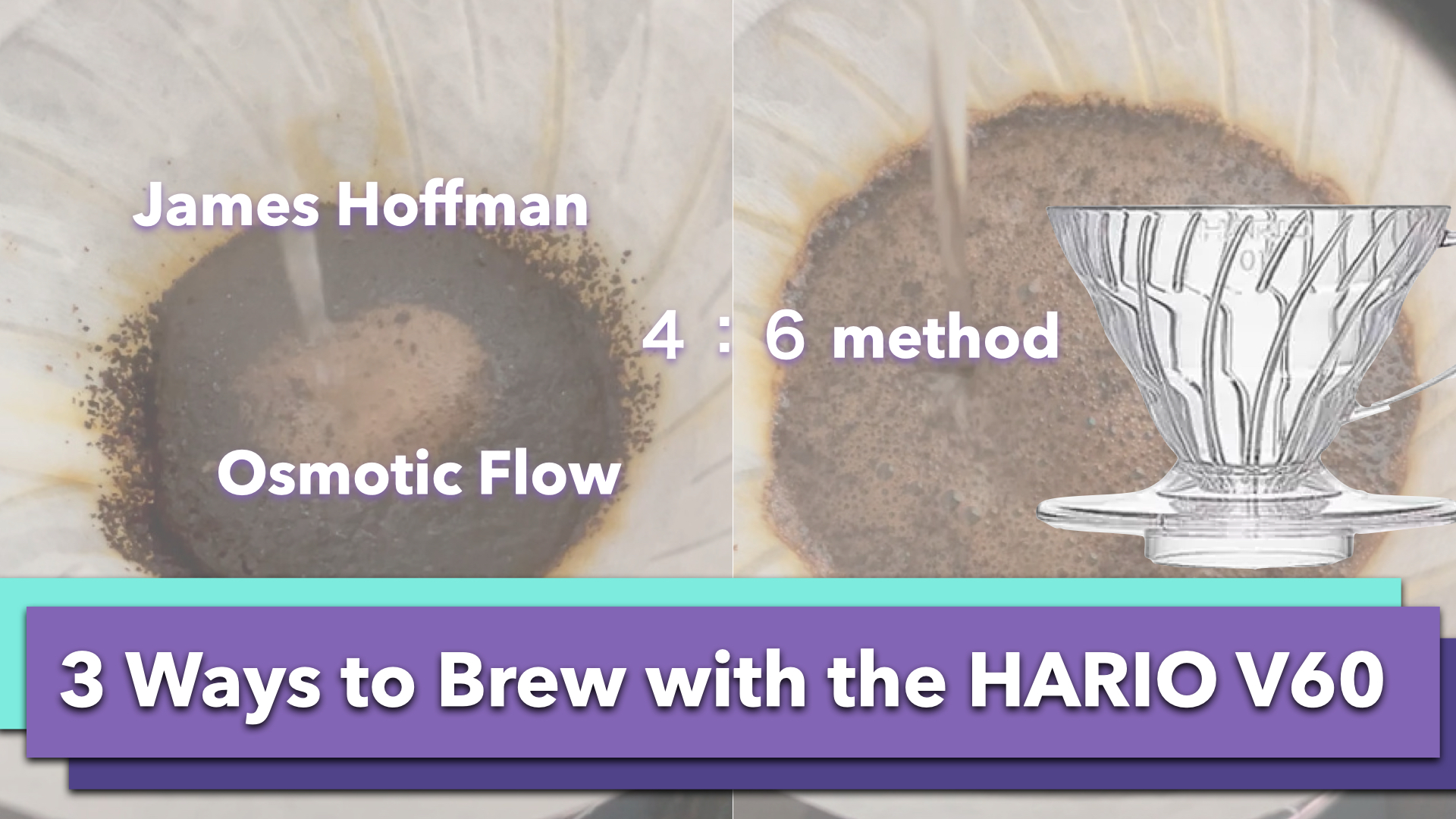

コメント